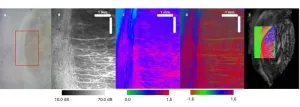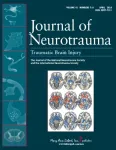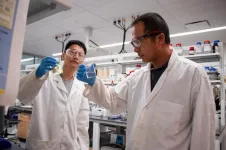(Press-News.org) As a rule, GPS indicates our location with an accuracy of just a few meters. But we have all experienced situations where the possible error increases to a few hundred meters or the indicated location is simply wrong. One reason for this can be the small number of satellites with line-of-sight contact to the navigation device or unfavorable relative alignment of the satellites.
How does GPS work?
GPS satellites are equipped with an extremely accurate atomic clock and know their positions at all times. They continually transmit the time and their location using radio waves. A mobile phone or other navigation device receives these signals from all satellites within their line of sight. The difference between the arrival time at the local clock of the receiver and the transmission time recorded by the satellite clock corresponds to the time taken for the signal to travel from the satellite to the receiver (the “time of flight”). Since radio waves travel at the speed of light, the time of flight determines the distance covered by the signal. The satellite positions and the distances are used to calculate the position of the receiver using a system of equations.
This simplified description does not take into account the fact that the local clock in the receiver is not an atomic clock. If it is inaccurate by just one millionth of a second, the calculated position will be inaccurate by at least 300 meters. The GPS problem is the need for the phone or other navigation device to determine the precise time along with the location – known in the theory of relativity as space-time.
If too few satellites are in the line of sight, the system no longer functions reliably and delivers multiple solutions, in other words several different locations where the receiver could be. This can lead to the situation where a phone indicates an incorrect location or no location at all. Until now the number of satellites needed to obtain unique solutions to the GPS problem has only been conjectured.
Five satellites for a precise location
Mireille Boutin, a professor of discrete algebra and geometry at TU/e and Gregor Kemper, a professor of algorithmic algebra at TUM, have now produced a mathematical proof showing that with five or more satellites, the exact position of the receiver can be uniquely determined in almost all cases. “Although this was a long-standing conjecture, nobody had managed to find a proof. And it was far from simple: We worked on the problem for over a year before we got there,” says Gregor Kemper. At present every location on Earth has sight contact to at least four satellites at all times. “Roughly speaking, with only four satellites, the probability of having a unique solution to the GPS problem appears to be 50 percent. Proving that statement is one of our next projects,” says Kemper. With three or fewer satellites in the line of sight, GPS navigation definitely does not work.
Geometry and uniqueness
The researchers arrived at the proof by characterizing the GPS problem in geometric terms. They found out that the position of the receiver cannot be uniquely determined if the satellites are located on a hyperboloid of revolution of two sheets. This is a curved surface that is open in all directions. Although this result is theoretical, it has the practical benefit of offering a better understanding of inaccuracies in determining positions.
END
Mathematical proof: Five satellites needed for precise navigation
2024-09-06
ELSE PRESS RELEASES FROM THIS DATE:
Scalable, multi-functional device lays groundwork for advanced quantum applications
2024-09-06
Researchers have demonstrated a new multi-functional device that could help advance the scalability of solid-state color centers, enabling them to be used in larger and more complex quantum computers and networks. As efficient photon-spin interfaces, solid-state color centers are promising candidates for qubit nodes — essential units for storing and processing quantum information.
Solid-state color centers are point defects that can absorb and emit light at specific wavelengths. To be useful in real-world quantum applications, they must be optically addressable in a fast and controllable manner while also allowing ...
Falling for financial scams? It may signal early Alzheimer’s disease
2024-09-06
Older adults who are more vulnerable to financial scams may have brain changes linked to a higher risk of Alzheimer’s disease, according to a first-of-its-kind study led by researchers at the USC Dornsife College of Letters, Arts and Sciences.
Nearly 7 million Americans are living with Alzheimer’s disease, the fifth leading cause of death among those 65 and older. The disease will carry an estimated $360 billion in health care costs this year alone, according to the Alzheimer’s Association.
Researchers led by Duke Han, professor ...
Integrating MRI and OCT for new insights into brain microstructure
2024-09-06
In a new study, researchers compared the orientations of nerve fibers in a human brainstem using two advanced imaging techniques: diffusion magnetic resonance imaging (dMRI)-based tractography and polarization sensitive optical coherence tomography (PS-OCT). The findings could aid in combining these techniques, which each offer unique advantages, to advance our understanding of the brain’s microstructure and help inform new techniques for early diagnosis of various brain disorders.
Isabella Aguilera-Cuenca from ...
Designing a normative neuroimaging library to support diagnosis of traumatic brain injury
2024-09-06
With recent advances in neuroimaging, moving from qualitative to quantitative outputs, an understanding is needed of what normal data look like to be able to apply these advances to diagnosis and outcomes prediction in traumatic brain injury (TBI). A new article in the peer-reviewed Journal of Neurotrauma introduces the large Normative Neuroimaging Library (NLL) to the research community. Click here to read the article now.
The American College of Radiology and Cohen Veterans Bioscience created a reference ...
Department of Energy announces $68 million in funding for artificial intelligence for scientific research
2024-09-06
WASHINGTON, D.C. - The use of Artificial Intelligence (AI) in scientific research is a top priority at the Department of Energy (DOE), which today announced $68 million in funding for 11 multi-institution projects, comprising 43 awards.
The funded projects will develop new ways to create foundation models, which are machine learning or deep learning models that can be used across a wide range of applications because they’re trained on broad data. Foundation models are a key building block of AI.
Those models will be used in computational science, to automate workflow in laboratories, to accelerate scientific programming, and much more. The possibilities ...
DOE, ORNL announce opportunity to define future of high-performance computing
2024-09-06
The Department of Energy’s (DOE) Office of Science today announced a new research and development opportunity led by Oak Ridge National Laboratory (ORNL) to advance technologies and drive new capabilities for future supercomputers. This industry research program worth $23 million, called New Frontiers, will initiate partnerships with multiple companies to accelerate the R&D of critical technologies with renewed emphasis on energy efficiency for the next generation of post-exascale computing in the 2029 and beyond time frame.
“There is a growing consensus that urgent action is needed to address an array of bottlenecks ...
Molecular simulations, supercomputing lead to energy-saving biomaterials breakthrough
2024-09-06
A team led by scientists at the Department of Energy’s Oak Ridge National Laboratory identified and successfully demonstrated a new method to process a plant-based material called nanocellulose that reduced energy needs by a whopping 21%. The approach was discovered using molecular simulations run on the lab’s supercomputers, followed by pilot testing and analysis.
The method, leveraging a solvent of sodium hydroxide and urea in water, can significantly lower the production cost of nanocellulosic fiber — a strong, lightweight biomaterial ideal as a ...
Low-impact yoga and exercise found to help older women manage urinary incontinence
2024-09-06
Older women struggling with urinary incontinence can benefit from regular, low-impact exercise, with yoga as well as stretching and strengthening showing benefits in a new study published Aug. 27 in Annals of Internal Medicine.
The research, led by scientists at Stanford Medicine and the University of California, San Francisco, is part of a larger effort to identify low-risk, low-cost ways to treat one of the most common health problems women face as they age.
After 12 weeks of a low-impact yoga program, study participants had about 65% fewer episodes of incontinence. Women in a control group doing stretching and strengthening exercises ...
Genetic studies reveal new insights into cognitive impairment in schizophrenia
2024-09-06
In a comprehensive review of recent genetic and population studies, published in the peer-reviewed medical journal Genomic Psychiatry (Genomic Press, New York), Professors Michael Owen and Michael O'Donovan of Cardiff University's Centre for Neuropsychiatric Genetics and Genomics present evidence that challenges conventional wisdom about cognitive deficits in schizophrenia. Their analysis reveals that premorbid cognitive impairment – lower IQ and other cognitive deficits present before the onset of psychosis – is largely explained by non-familial factors rather than by the same inherited genetic variants that ...
Researcher develops technology to provide cleaner energy and cleaner water
2024-09-06
As the world transitions to cleaner energy sources, the need for energy-relevant metals and critical minerals has surged dramatically. Driven by the rise of electric vehicles and other green technologies, these essential materials are in high demand across the globe.
Metals, such as lithium, cannot be grown. They must be mined or recycled, making this a top priority for researchers in the mining industry. Traditional methods of mining lithium are expensive and can be harmful to the environment, but researchers at Virginia Tech have found a way to minimize this environment impact. They will optimize and scale up this method with ...



